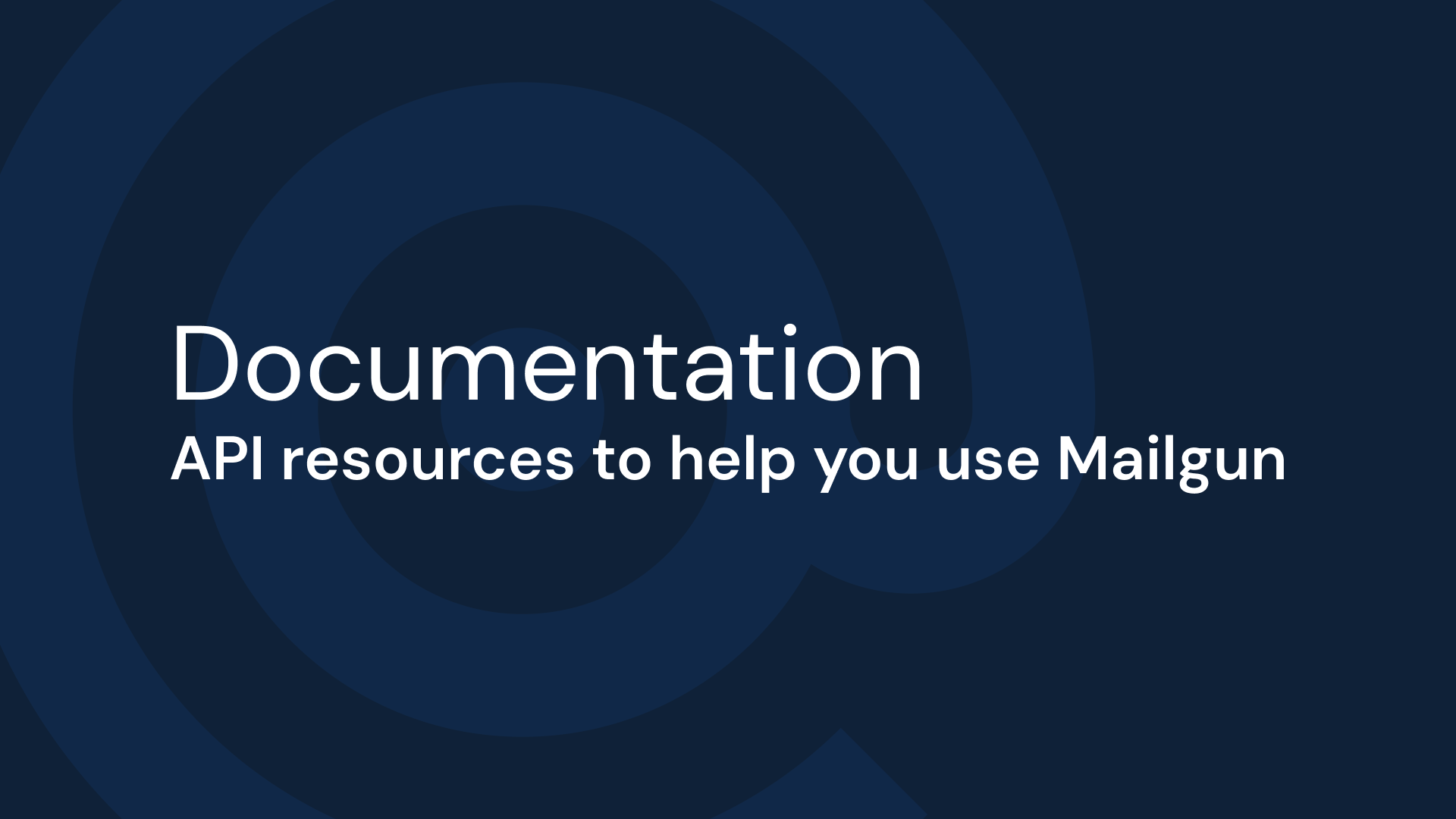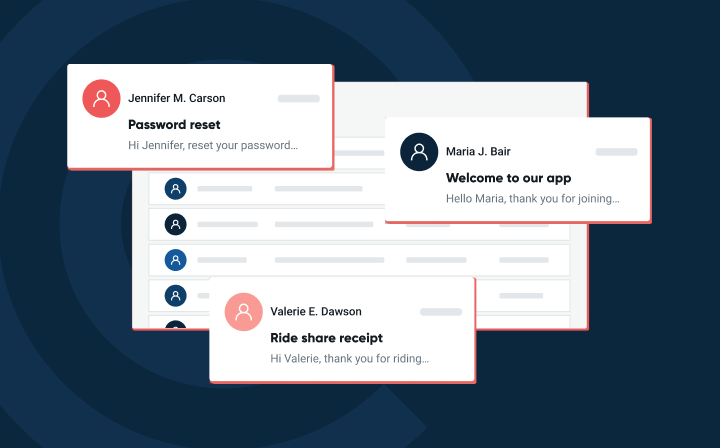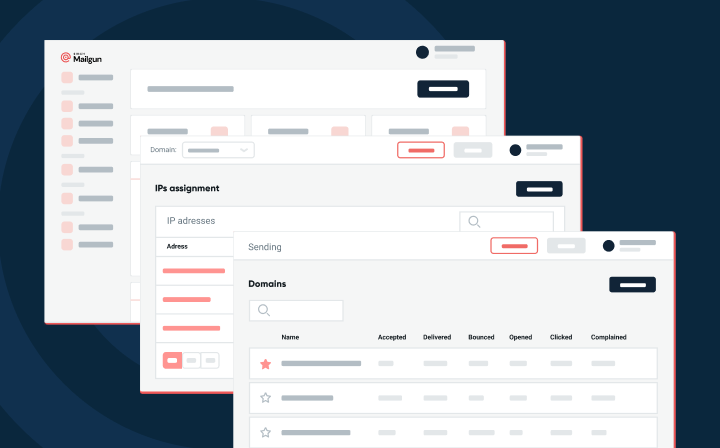Deliverability
How to send bulk email: The dos and don’ts of mass email sending
Email blasts are a great way to get your email messages out to your audiences as fast as possible, unless something goes wrong...
PUBLISHED ON
Both transactional and marketing email messages can rely on sending massive amounts of email all at once. But while bulk is better when buying toilet paper, that’s not always the case with email. If you don’t do it right, sending email blasts could land you in spam. How exactly should you go about bulk email? We’ll show you the best (and worst) practices for mass email sending.
Table of contents
Don’t send mass emails from new domains and new IPs
Don’t send mass emails to old email lists
Don’t mislead your recipients
Don’t send generic in-email content
Do follow email best practices
Do make sure your ESP can handle your email volume
Do give a little heads up to your ESP
What is bulk email sending?
Bulk sending, also know as mass email or email blasts, is a single email that is sent to a large number of people. Your reasons for sending in bulk may vary: you might have a limited-time offer, a big announcement, or something else that you want people to know about. Or it might be more transactional like an account update notification but there’s an important distinction we need to make.
Email blasts are different from transactional emails. Most email-focused organizations typically send both. However, they differ in a key way. Transactional emails are triggered by a consumer action – like an online order or password reset request – and are only sent when that particular action is made. They are not sent to a mass group of people at one time for a marketing purpose. Similarly, automated emails – like welcome emails, birthday emails, or abandoned carts – are messages sent to different contacts when a particular condition is met and are other examples of transactional messaging.
Email blasts are not triggered by consumer action. Instead, they’re specifically created, scheduled, and sent directly by the organization’s marketing team – like email newsletters and special promotions. They are sent to much larger groups of people than transactional emails – either entire emailing lists or specifically targeted audience members with segmentation.
What makes you a bulk sender?
Am I a bulk sender? This has been the question on the minds of many senders since Gmail and Yahoo announced they would be enforcing new sender requirements for bulk email senders. The enforcements have already begun to go into effect and many senders are still unsure if they will be impacted.
Here’s the short answer. A bulk sender is anyone who sends a single email to roughly 5000 contacts in a day. Google has publicly referenced the 5000 threshold, but Yahoo has expanded saying that there is no exact cutoff at 4999 emails, or even 4000. If you are sending one email to many recipients, then you are a bulk sender. And once a bulk sender, always a bulk sender so it’s important to use best practices.
Learn more about the Gmail and Yahoo sender requirements with our dedicated resources page.
Bulk email best practices
In modern-day emailing, engagement has become the key element that determines the success of an email marketing strategy. With the rise of email marketing tools, CRMs, and other marketing features that allow for a more personalized email experience, email blasts are often associated with mass spamming strategies. This mass spamming is what the new Gmail and Yahoo sender requirements are trying to address. The requirements hold senders to low spam complaint rates, specific unsubscribe practices, and more robust authentication with DMARC.
Here are some ways to optimize and secure your bulk sending:
Double opt-in: Your contact list is key and list hygiene is incredibly important as it confirms your recipients have actively signed up to receive your emails and indicates that they would want to read updates and receive promotions from your organization. When thinking about how to grow your email list, organic growth like this will benefit you in the long run over buying contact lists just to reach a higher volume.
Segmentation: Targeted emails tend to generate better engagement because they provide more value to the user. As a result of this increased engagement, they also have better deliverability. Using collected data to determine the types of products your customers are interested in and what content they would most benefit from is a good way to reduce spam complaints.
Monitoring: Engagement metrics will tell you a lot about how your emails are performing, but you should also be monitoring your spam complaints, email bounces, and click-through rates to get the full picture on the performance of your campaigns and quality of your content.
Before sending an email blast, ensure you’re compliant with any data protection laws that might apply in markets where you have email subscribers, like GDPR, CCPA, or CAN-SPAM Act. We’d be remiss if we didn’t mention it, and you can face hefty fines and penalties.
The don’ts of bulk sending
Generally speaking, bad practices hinder your day-to-day sending and land you in the spam folder with a single recipient. This is multiplied many times over when sending an email blast, significantly hurting your open rates and your overall engagement metrics. So, let’s get into it:
Don’t send mass emails from new domains and new IPs
Brand new domains and IPs don’t have reputations yet, so Inbox Service Providers (ISPs) don’t know what to expect from them. An email blast right out the gate for any new domain or IP is a one-way ticket to the spam folder, so be mindful of where you are sending from in the first place. Consider using an older domain or warm up your IP before sending that much email at once and you’re bound to have better results.
Don’t send mass emails to old email lists
This should be a given, but don’t send to a list that you dug up from 10 years ago and expect to land in the inbox. Even if you think your email campaign will interest them, it’s better to ditch that old email list. Especially with GDPR taking effect last year, old lists are a fast way to end up in the spam folder (or worse, rack up some hefty fines). Make sure your lists are clean and composed of users who have completed your opt-in.
Don’t mislead your recipients
This is covered in the many data protection laws around the world, but it’s worth a reminder. You always need to be very clear about what your emails are about. You cannot mask an email marketing campaign under the guise of a transactional email receipt – it’s shady.
It’s also a good idea to avoid spammy email subject lines or anything that might confuse your recipient. Click-bait tends to hit spam filters easily, so it’s best to avoid it. Plus, everyone hates being misled.
Don’t send generic in-email content
If you consistently send the same email to your entire email list, people may soon find that these messages don't add value to them. The best email is an email that's personalized. Adding personalization based on demographics, behavior, interests, or personal preferences will lead to fewer unsubscribes, higher click-through rates, and more conversions. Email personalization can be coded into your email HTML template and most email marketing software also offers this option.
Bonus tips for bulk senders
Enough of the dreary and ominous warnings. let’s end on a high note with some more steps you can take to help land your mass emails in the inbox. Some of these might be obvious, but, hey, you might want to take another look at them.
Do follow email best practices
Outside of the CAN-SPAM Act, it’s always a good idea to follow best practices. Make sure that your emails are designed nicely and follow your style guide. This avoids the problem of you looking like a spammer or phisher. Using consistent preheaders, subject lines, CTAs, and tone of voice will give off a familiar first impression. Be prepared for the next email blast with a library of branded HTML email templates ready to go.
Remember to keep your transactional and marketing emails separate if possible with subdomains, and always send to email lists that are updated and clean. Focus on strategic engagement to plan the email frequency of your marketing emails and keep a consistent email cadence to ensure your users are expecting your emails.
Do make sure your ESP can handle your email volume
Email Service Providers (ESPs) always have different tiers of service, and even then, not all of them have a great solution for burst sending or email blasts. Here at Mailgun, our RapidFire Throughput SLA can send 250,000 emails in a single minute. If you aren’t using a solution that can handle that volume that quickly, your email messages can bottleneck. Bottlenecking leads to inaccurate sending times, which might impact your complaint rate. Make sure your ESP can handle your volume.
Do give a little heads up to your ESP
While it isn’t necessary, it’s polite to let your ESP know when you plan on sending out a large mass email message. It helps support teams keep an eye out for anything that might go wrong with your sending, especially if you have a dedicated contact with your ESP like our Deliverability Services. Better troubleshooting ensures peace of mind.
Want to know more about mass email best practices? Check out our Email Growth Playbook, a database of 60+ tactics to help you increase the performance of your email campaigns.
What is the best way to bulk send?
Following email best practices is a must, but another just-as-important component of mass email sending is making sure you’re sending your email blasts the right way. Using a reputable, trusted email blast service is the best way to ensure that your emails are landing in the inbox and getting the attention they need.
Mailgun offers email blast services that are complemented by advanced email automation tools. These tools boost delivery rates and promote prime inbox placement to give your mass emails the greatest possible success. After sending your campaigns, you can use Mailgun’s analytics tools to measure your performance and see where your email blasts can be improved and where you’re hitting the bullseye.
What to look for in a mass email platform
When searching for an email service provider (ESP), there are a few things to consider if mass sending is a priority. First, you’ll want a platform that is able to handle large send volumes, so finding one with a strong email API for sending automation is a great place to start.
Second, search for a solution that has strong integration relationships with mailbox providers like Microsoft and Gmail. A platform that integrates with Google Postmaster Tools, or Microsoft SNDS means that all of your sending metrics like complaints, bounce rates, spam traps, etc., are all able to be pulled into the same place.
There are many ways that an ESP can make your sending easier and support healthy email deliverability. Here’s everything you need to know.
Wrapping up
Now that you’re equipped with tips, you should be in a good position to start or continue bulk sending from your organization.
Remember that email blasts require carefully organized email campaigns using personalization and segmentation in order to work successfully. Check with your team to be sure that every device on your end can handle the amount you plan to send out, and be sure your email messages have correct spelling, email design, and aren’t misleading. Whether you’re an app developer or an email marketer, nobody wants issues with their sending – especially when you’re sending bulk emails.
Keep these tips in mind, and you’ll be on your way to successful email blasting.







